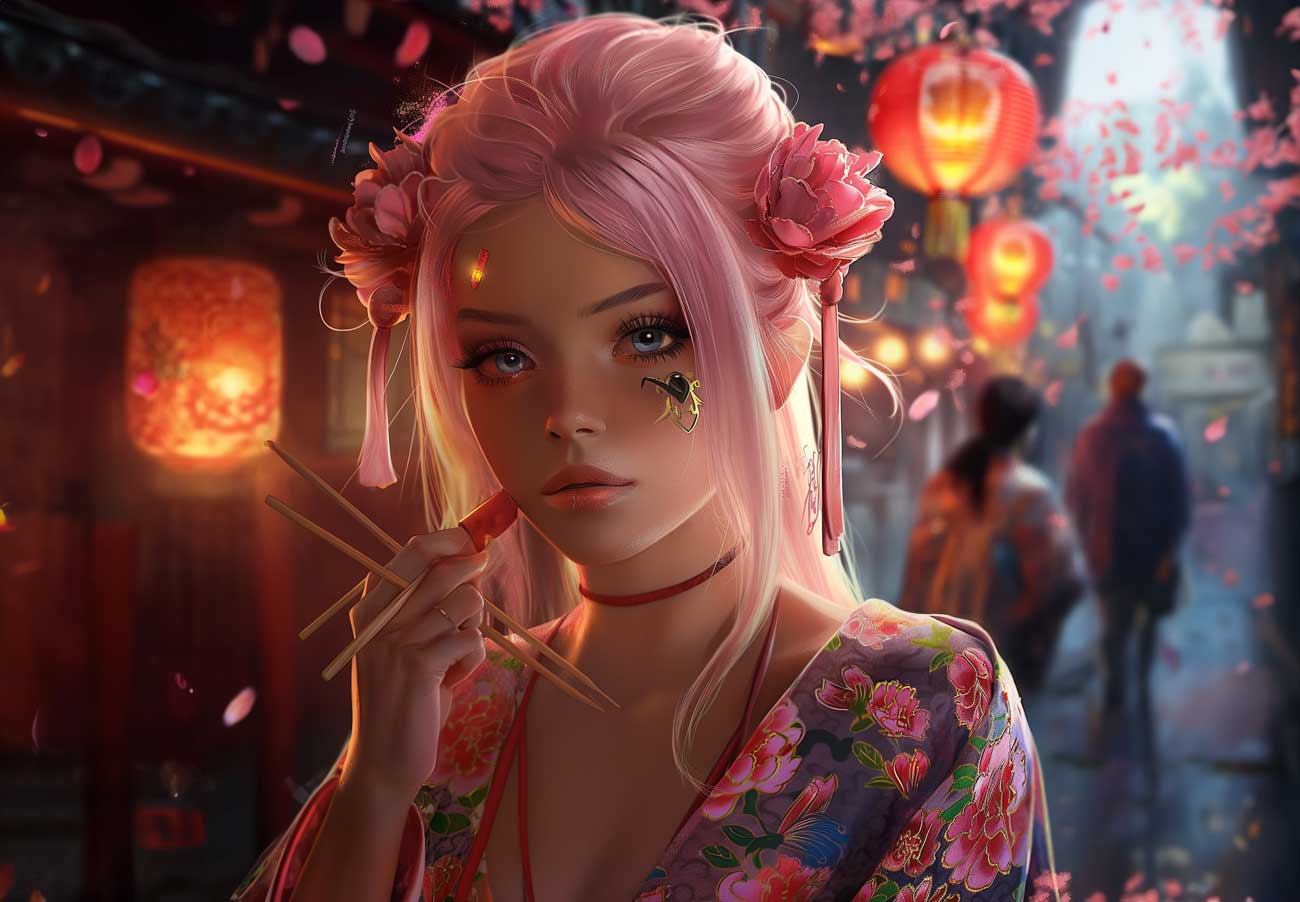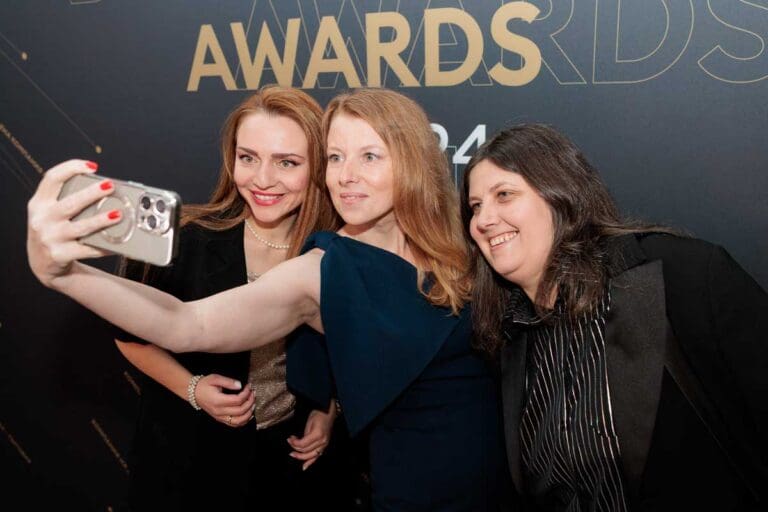Anime, a Japanese audiovisual genre, is more than just animation. It’s a unique blend of complex storytelling and distinctive aesthetics. Beyond being a globally popular form of entertainment, anime serves as a captivating window into Japanese culture.
Anime offers a broad spectrum, showing everything from food, language, and architecture to festivities, religious ceremonies, customs, art, clothing, and mythology. It’s a unique lens into how people live their daily lives. The diverse nature of anime productions mirrors the vastness of Japanese culture. What’s intriguing is how anime becomes a vibrant reflection of Japan’s identity, navigating the tension between tradition and modernity during the country’s identity evolution.
Origins
Anime, as a genre, represents a technical evolution of traditional Japanese manga dating back to the late 19th and early 20th centuries. Its roots coincide with Japan’s embrace of trade and cultural exchange after two centuries of isolation, initiated by the arrival of American warships in 1853. Trade agreements with the West prompted Japan to transition from feudalism to modernization, a journey that continues today. Both manga and anime encapsulate Japan’s shift from tradition to globalized modernity.
Manga, essentially Japanese comics, combines the styles of traditional Japanese painting (ukiyo-e) with the format of Western comics. Coined by painter Hokusai, the term gained prominence through Osamu Tezuka, acknowledged as the father of modern manga. Tezuka’s prolific production and unique techniques, characterized by disproportionately large eyes, infused his characters with tenderness and humanism.
Tezuka’s iconic work, Astroboy, a science fiction tale featuring a robot saving Earth from alien threats, marked the inception of anime. With themes echoing post-World War II events, Astroboy pioneered science fiction in anime, delving into technology and space-time narratives. The popularity of manga and technological advancements led to the emergence of animated short films in the mid-20th century, now recognized as animé. Known for their friendliness, dynamism, versatility, and universality, animé transcended global barriers, appealing to diverse audiences irrespective of religion, language, gender, or age.
The 1960s witnessed the expansion of anime, introducing sub-genres like Giant Robots (Mecha) with Tetsujin 28-gō (Iron Man 28). The ’70s marked a significant milestone with animes like Mazinger Z and Gundam, where epic battles against monsters, akin to Godzilla, unfolded. The ’90s solidified anime’s global presence through cinema, with international successes including Pokemon, Sailor Moon, Sakura Card Captor, Dragon Ball, and Digimon. Anime, a cultural and technological marvel, continues to shape and mirror Japan’s identity evolution, leaving an enduring impact on global culture.
Aesthetic and Narrative
Anime possesses distinct characteristics that set it apart from Western animations. Unlike the common trope of clear-cut good versus evil, anime narratives often embrace complexity, delving into nuanced character dynamics. Characters are endowed with well-defined personalities, fostering genuine, humanized relationships. Notably, the story unfolds seamlessly within the backdrop of protagonists’ daily lives, regardless of the universe or temporal setting, typically rooted in or connected to Japan.
The artistic style of anime further contributes to its uniqueness. While lacking a singular style, anime images resemble a visual novel, markedly different from conventional comics. A key distinguishing factor is the vibrant, highly saturated color palette. Additionally, characters exhibit features almost human yet distinct, with round, large eyes, slender noses and mouths, and unique hairstyles. Anatomically implausible bodies, characterized by shoulders matching the head size and supported by long, thin necks, add to the unmistakable anime aesthetic. Despite this anatomical departure, anime animation captivates with its inherent beauty and elegance. These distinctive narrative and visual elements collectively contribute to anime’s enduring allure and global popularity.
Values
Anime often conveys positive messages through themes of resilience and determination. The concept of “Faito” or “fight” underscores that characters, through superhuman efforts and pure hearts, can overcome obstacles and achieve their goals. Iconic series like Saint Seiya and Dragon Ball Z embody these ideals, emphasizing the power of will.
Conversely, anime also addresses societal critiques within Japan. For instance, Welcome to NHK explores the social isolation of a 25-year-old navigating unemployment and withdrawal from society, reflecting the harsh realities faced by some adolescents. The protagonist seeks solace in manga, mirroring the challenges of extreme shyness prevalent in Japanese culture.
Chihiro’s Journey delves into Japan’s work culture, portraying the hive-like awareness of work and family dynamics. Characters like Lin, No Face, and Bô exemplify the dissociation between personal and professional life, highlighting the pronounced hierarchy in Japanese corporatism.
Evangelion adds depth to the anime landscape by exploring the strained parent-child relationship amidst the pressures of work. The series intertwines this narrative with a gripping story of robots, driven by teenagers to save the world. The anime underscores the societal expectation of lifelong company loyalty, even at the cost of family bonds, and the toll it takes on individuals.
In the contemporary world, where lifetime company loyalty is still prevalent, anime emphasizes the dignity of work while acknowledging its potential negative impact on mental health. Despite the challenges, the narrative suggests that work, when approached with purpose and balance, contributes to personal growth and dignity, symbolized by characters like Chihiro and Kamaji.
Tradition and modernity
Anime often weaves its plot and themes within the psychosocial context unique to Japanese life. While some series explore science fiction or contemporary settings with technological influences, traditional Japanese customs remain prominent. Religious references, especially from Shinto and Buddhist traditions, are prevalent, showcasing temples and festivities, even though the majority of modern Japanese may not actively practice these faiths.
Historical elements, such as samurai and feudal aesthetics, play a significant role, offering glimpses into Japan’s rich history and the Bushido (samurai codes of conduct). Anime frequently introduces viewers to diverse yokai (Japanese mythological beings) and kabuki theater characters, contributing to the portrayal of traditional Japanese folklore. Direct references from classic Japanese folk literature, like Jiraiya, Tsunade, and Orochimaru in Naruto, draw on the novel Jiraiya Goketsu Monogatari (The Legend of Jiraiya the Gallant).
Chihiro’s Journey serves as a poignant example of the cultural clash between modernity and tradition in Japan. The main character, a girl, encounters a torii in the forest and is frightened by the dôsojin, Shinto deities associated with travelers and roads. Her fear stems from a lack of recognition, symbolizing the disconnect experienced by youth unaware of their cultural origins.
Japan’s identity crisis
Japan, a land where past and present gracefully collide, unfolds as a captivating tapestry of historical and cultural diversity. In this vibrant tapestry, Tokyo symbolizes the modern heartbeat, pulsating with technological marvels and pop culture. Meanwhile, Kyoto stands as a testament to tradition, where the echoes of the Edo period linger in every stone. While daily life in Japan has evolved, respect for ancient beliefs endures, particularly among the older generation who tenaciously hold onto age-old customs.
Japan’s unique trajectory, marked by prolonged isolation, is reflected in its present-day landscape. The nation is in the throes of transition, where modernity grapples with tradition. The clash is evident in the varied cityscapes: youth embracing globalization and Western influences, juxtaposed with elders steadfastly maintaining their heritage.
In the world of anime, this duality comes alive, transcending a mere audiovisual genre to become a compelling resource. It unravels the layers of Japanese culture, offering a glimpse into the intricate dance between tradition and modernity that defines the essence of Japanese existence.






















